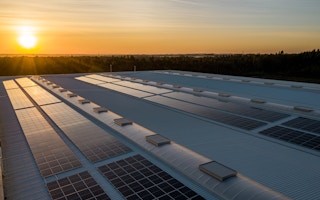The introduction of the Feed-in-tariff (FIT) mechanism for solar and wind energy projects has contributed to the remarkable uptake in Vietnam since 2017. After the last FIT rollout on 31 December 2020, multiple discussions on transitioning to the public-private partnership under the auction scheme have arisen among the government and experts to foster market competitiveness. In February 2023, the Prime Minister’s latest Decision 165/QD-TTg emphasised the need to expand the major industries’ local supply chain and establish a national energy development plan from 2021 – 2050. As a leading ASEAN country with the highest renewable energy (RE) growth rate, is it time for Vietnam to establish local content requirements (LCRs) to strengthen the domestic industry?
In some ASEAN countries, the minimum local content was introduced to boost the local RE supply chain; however, the outcomes are not as intended.
For Indonesia, the LCRs for products and services are prioritised in the general manufacturing industry and infrastructure projects, including electricity. For example, in on-grid solar photovoltaic (PV) projects, the local content is set at 40 per cent for solar modules, 34 per cent for goods, and 100 per cent for services. Such a requirement is perceived as a significant bottleneck for solar development due to the limited manufacturing capacity of 500 megawatt peak (MWp) per year, a far cry from the existing solar potential of 532.5 gigawatt peak (GWp) per year and the aspirational target of 90 per cent domestic content of solar panels by 2025. Indonesia’s LCRs have become counter-productive as it is not on par with the local industry maturity.
In Malaysia’s Large-Scale Solar (LSS) programme, all bidders must be local companies with a minimum domestic shareholder of at least 51 per cent. However, in the country’s latest auction, only companies 100 per cent Malaysian-owned or listed with at least 75 per cent shares held by local people or companies could participate. The local content element (i.e., 100 per cent locally manufactured or assembled PV modules or inverters) is also one of four elements to select the winning bidder. Such measures have positioned Malaysia as the third largest global manufacturer of PV modules and products, with 7 over 11 largest PV companies operating. But there is still a long way for the “made in Malaysia” solar PV to compete in the ASEAN and global market due to the slightly higher overhead cost labour costs compared to Chinese imports and the dependence on importing China’s components such as wafers.
Meanwhile, despite not having a specific local content policy in Thailand, favour over local bidders in the auctions exists. In the community-based RE auction, the selected bidders are requested to establish joint investment with the locals, sharing 10 per cent of the project company for social and welfare development. In the power generation project, although foreign stakeholders can hold up to 100 per cent share, they cannot own land and must comply with the Board of Investment Promotion Certificate.
Bioenergy has been prioritised in Thailand over wind or solar as it supports domestic activities such as utilising local materials and increasing employment in the agricultural sector. The efforts paid off by the dominance of bioenergy with more than 15,033 GWh – around 60 per cent of total RE generation in 2020, according to the 7th ASEAN Energy Outlook. But the supportive policies somewhat indicate the “play-it-safe” strategy without unlocking the localisation potential of the manufacturing industry for other RE sources, such as solar and wind, through enhancing R&D activities and technological transfers, limiting the diversity of the energy mix.
So, what should ASEAN consider, including Vietnam, in upgrading the RE industry to the global level?
Learning from the success story of China’s wind boom, LCRs started at 50 per cent in 2003, then increased to 70 per cent in 2004 before being abolished in 2009. It was implemented as a short-term objective to increase the competency of local manufacturers with a clear milestone. In the long run, the market opened to welcome international players when the local industry matured enough to support local demand and exports. Yet, it is less widely known that China initiated LCR at much lower (20 per cent) and earlier (1997).
In 1996, before the initiation of LCR, the wind power market in China was very nascent, with only 56.6 megawatt (MW) in place, and most of it was from non-Chinese companies. However, the tables were turned since the kick-off of “Ride the Wind” programme in 1997 with strong government support in facilitating China’s technology learning curve through joint ventures. Nordex Balcke-Durr GmbH, a German company, was selected by China’s State Planning Commission as the first foreign partner to develop the first 400 MW of wind projects, contributing to the remarkable wind energy uptake of 468 MW in 2002.
LCR implementation was also combined with substantial financial support from the government to maintain the momentum in attracting foreign and private investment to China’s market. In 2003, preferential tariffs for LCRs-complied wind projects were established in the tendering programme. And the country enforces the participation of Chinese or Chinese-holding enterprises in the Clean Development Mechanism (CDM)-approved projects.
The strategic localisation strategy through joint ventures with a functioning finance sector from both government and international donors further accelerated the learning rate of China’s wind technology to a new level, enough to attract the interest of the world’s leading wind manufacturer. Soon, Gamesa invested in local capacity training and manufacturing facility in 2004. Despite the expense of losing its share in the Spanish market, it still gained profit from the increased production volume.
Also, Goldwind – a formerly state-owned enterprise, was founded in 1998 through a grant from the Danish government. It grew into the top 3 largest in China and the leading 5 worldwide companies in wind turbine manufacturing after the management takeover by German manufacturer Vensys in 2008. These two examples proved the policy environment at that time did not eradicate the foreign players fiercely, instead offering them a win-win alternative.
Although the LCR period in China was officially terminated in 2009, the development of its wind manufacturing industry did not end there. To catch up with the global standards and quality, the Chinese government understood the critical need to invest heavily in R&D activities, especially after many foreign players left the market due to the high LCR and more competitive local suppliers. Therefore, in 2008, the R&D Special Fund was established to enhance innovative technology and satisfy the quality test to step into the global market with other giants.
Like the CDM requirement, the eligible company for R&D Special Fund must be Chinese-owned, and the developed intellectual property must be Chinese-patented. As a result, having a special fund as a way forward in the post-LCR period has helped China attain the cumulative wind installation of 12 GW as of 2008 and 75.3 GW four years later, representing 28.9 per cent of the new global capacity in 2012.
For Vietnam, despite being one of the leading solar PV manufacturers in ASEAN, the learning curve was still in the initial phase as most factories’ role is only assemblers of the imported wafers and cells from China to produce solar modules, a similar story to Malaysia. Establishing LCRs for the RE supply chain is still a foreign concept in Vietnam that would require a detailed action plan, roadmap and coherent policy framework before, during, and after the LCRs period to increase the local products and services while maintaining competitiveness with the international players in the market.
Dr. Nuki Agya Utama is the executive director of the ASEAN Centre for Energy (ACE). Ngoc Huong Giang Vu is an associate research analyst at the Sustainable & Renewable Energy Department at ACE. Monika Merdekawati is a research analyst at ACE. The opinions expressed in this article are those of the authors, and do not reflect the opinions and beliefs of the ASEAN Centre for Energy.













